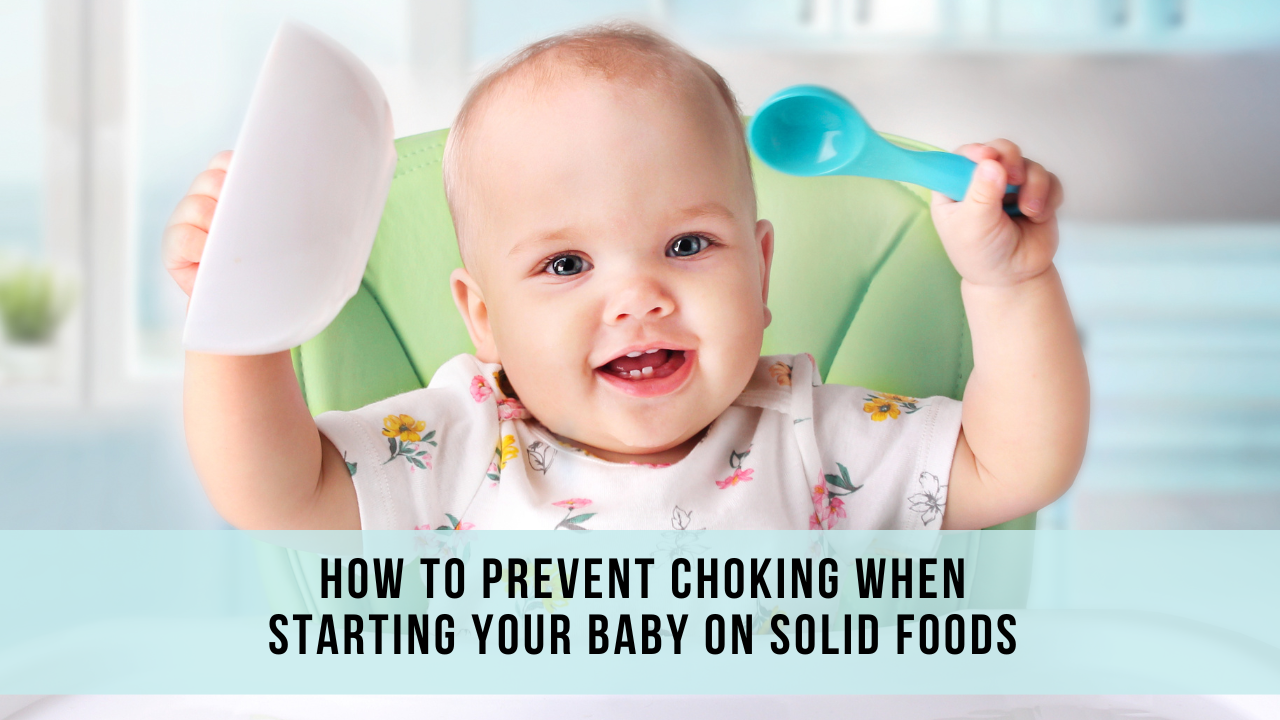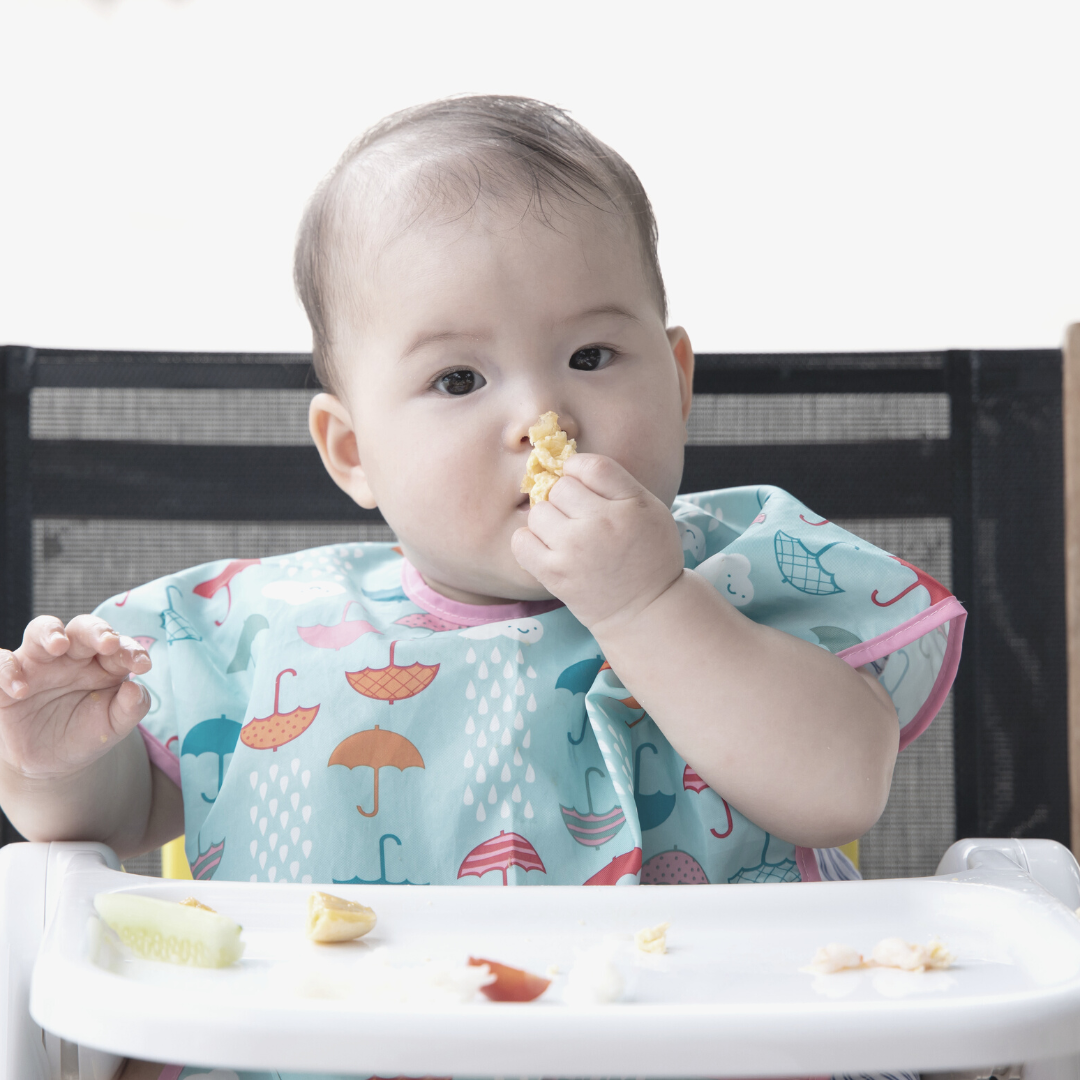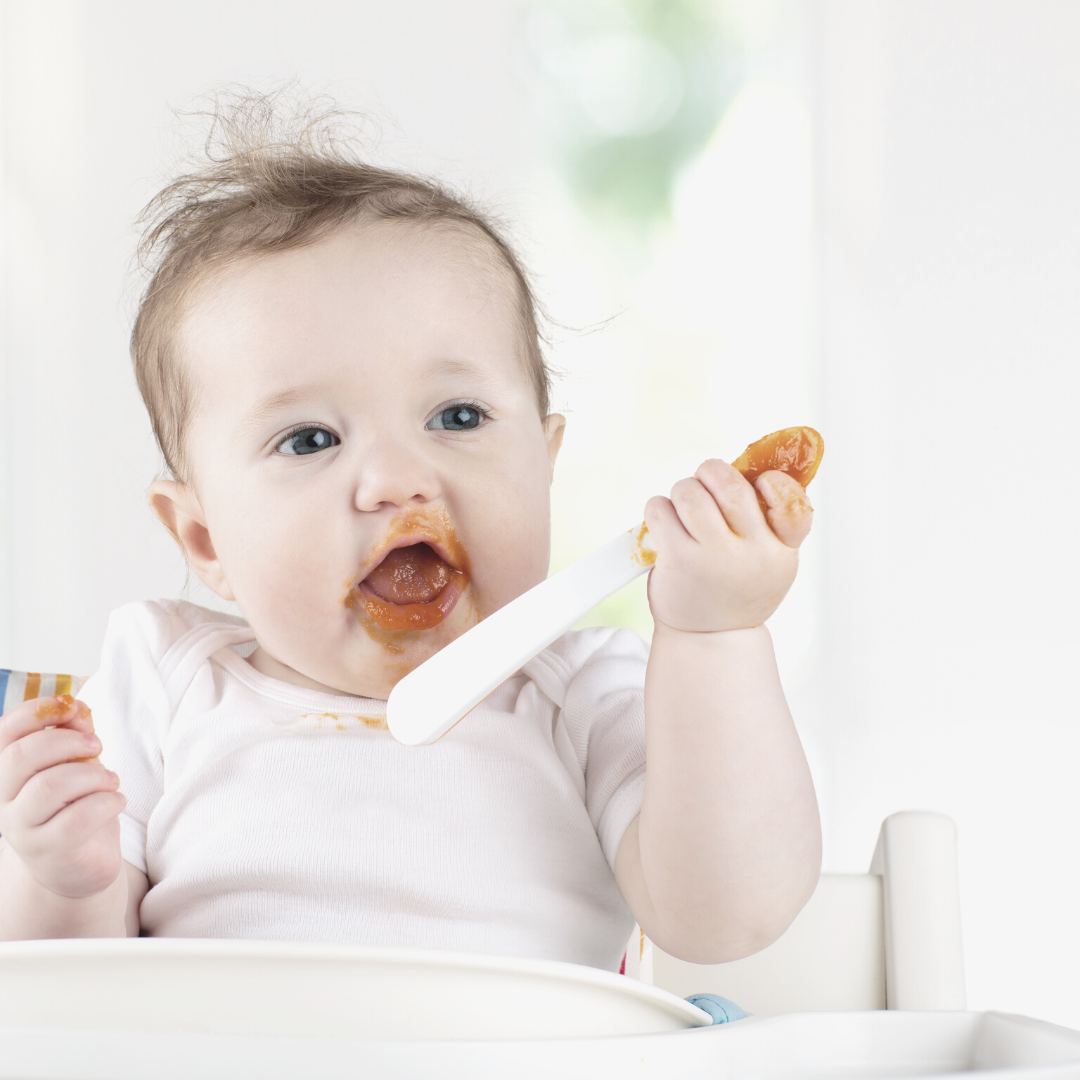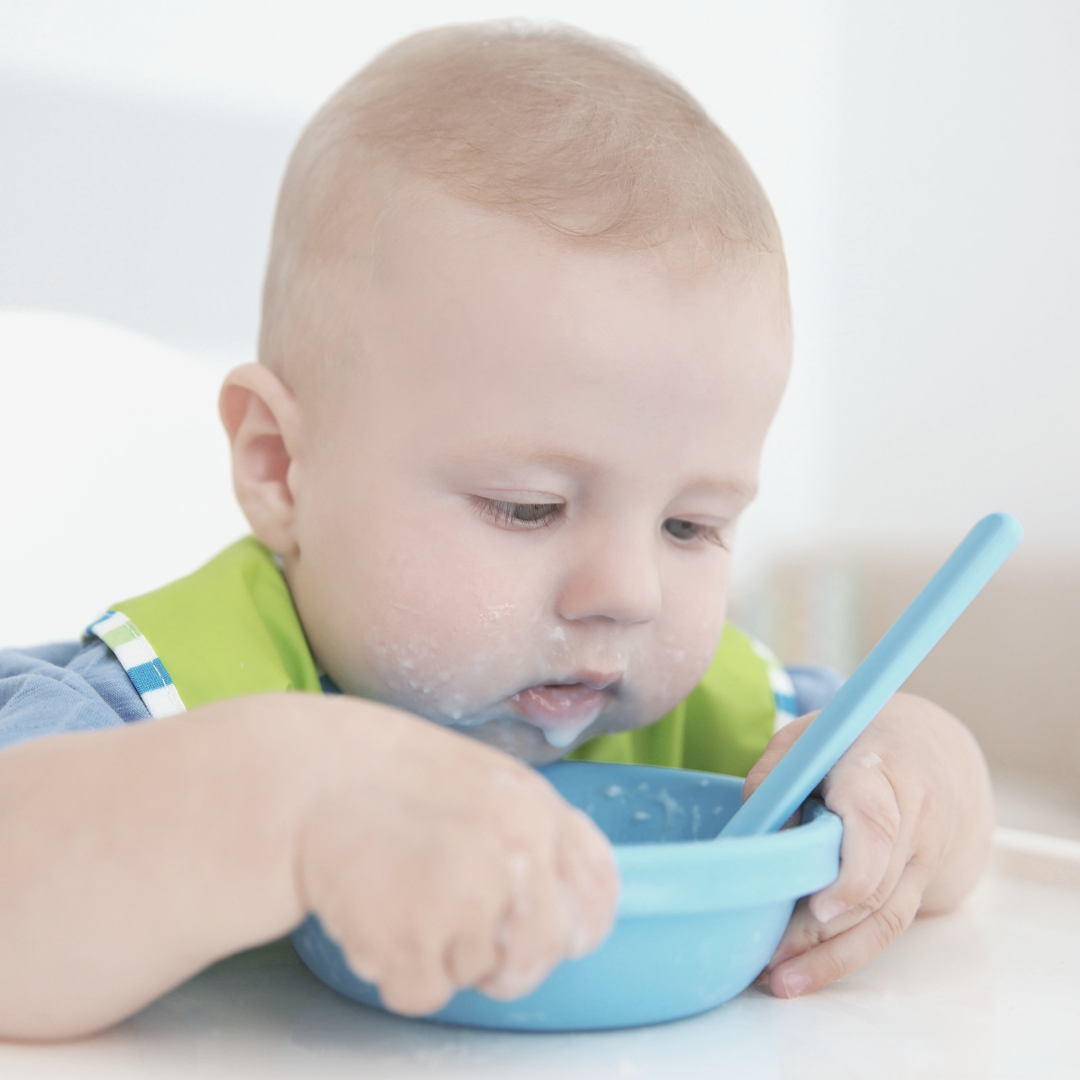How to Prevent Choking When Starting Your Baby on Solid Foods
Feb 20, 2023
There is nothing scarier than watching your baby choke on their food.
This happened with my son and I still think about it today (although I am sure he has long since forgotten about it).
There are some things you can do now to prepare for this should it happen to your child.
>>> Looking for some extra help starting solids safely after leaving your pediatrician's office? Starting Solids 101 streamlines up-to-date information on solid foods straight from a pediatric nurse practitioner. <<<
CPR/Basic Life Support classes
I cannot stress enough how important it is that all caregivers take these classes.
You learn the necessary skills to help your baby in the event of a medical emergency and we want everyone to be prepared!
Check your local Red Cross or hospitals for training dates and times.
Know the difference between choking and gagging.
A baby’s gag reflex is located farther forward in the mouth and eventually moves backward toward the throat as they get older.
Because it is so far forward at the beginning, your baby will likely gag and spit out food quite a bit as they learn this new skill.
If the child is gagging, you will notice:
-
Coughing
-
Vomiting/spitting out the food
-
Still able to make noise
If the child is choking, meaning a piece of food is partially or completely blocking their windpipe, you will notice:
-
High-pitched sounds
-
Silence (making no noise as they try to clear their airway)
Avoid choking hazard foods.
One way to ease your mind and prevent choking is to make sure you are serving appropriate foods.
Here are some foods you will want to AVOID feeding your baby:
Fruits/Vegetables
-
Cooked or raw whole corn kernels
-
Uncut cherry or grape tomatoes
-
Pieces of hard raw vegetables or fruit, such as raw carrots or apples
-
Whole pieces of canned fruit
-
Uncut grapes, berries, cherries, or melon balls
-
Uncooked dried vegetables or fruit, such as raisins
Proteins
-
Whole or chopped nuts and seeds
-
Chunks or a spoonful of nut and seed butters, such as peanut butter
-
Tough or large chunks of meat
-
Hot dogs, meat sticks, or sausages
-
Large chunks of cheese, especially string cheese
-
Bone-in meat or fish
-
Whole beans
Grain Products
-
Cookies or granola bars
-
Potato or corn chips, pretzels, popcorn, or similar snack foods
-
Crackers or breads with seeds, nut pieces, or whole grain kernels
-
Whole grain kernels of cooked barley, wheat, or other grains
-
Plain wheat germ
Sweetened Foods
-
Round or hard candy, jelly beans, caramels, gum drops, or gummy candies
-
Chewy fruit snacks
-
Chewing gum
-
Marshmallows
>>> FREE GUIDE: Add FLAVOR and NUTRIENTS to your baby's food. Click here. <<<
Prepare and serve foods based on baby’s age and development.
Follow these guidelines to make sure your baby can safely eat:
-
Your baby should sit up while eating, and be supervised at all times. Never leave baby unattended when they are eating, even if it is purees.
-
Only feed your baby in the high chair - never when they are walking or in the car.
-
Don’t hurry your child when eating—allow plenty of time for meals.
-
Only put a small amount of food on the tray at a time.
-
Avoid round, firm foods and large chunks (hot dogs, nuts, whole grapes, hard or sticky candy, popcorn, raw carrots).
-
Hot dogs are not safe for babies. If your toddler likes hot dogs, be sure to cut them lengthwise.
-
Avoid stringy foods like string beans and celery.
-
Avoid commercial white bread products—they can form pasty globs in your baby’s mouth.
-
Offer only a few pieces of food at a time.
-
Cut meat and poultry across the grain, and into tiny fingertip-sized pieces.
-
Food pieces should be no larger than one-half inch in any direction. If in doubt, cut food into smaller pieces.
Baby-led weaning (BLW) vs. purees
I often get asked if following the BLW method increases the chance of your child choking.
Research is showing that babies who do BLW do not show an increased chance of choking as long as the food is prepared in a way to minimize choking risk.
>>> Don't have time to plan creative baby food recipes? You need Moving Past Purees recipe book & guide <<<
What if baby chokes?
If you have determined that your baby is truly choking and not gagging, here are the steps you will need to take:
-
Have someone call 9-1-1 immediately.
-
Place your baby face down on your forearm with your arm resting on your thigh.
-
With the heel of your hand, give the baby five quick thumps on the back between the shoulder blades.
-
If this doesn’t work, turn the baby over onto their back with their head lower than their chest.
-
Place two fingers in the center middle of the breast bone just below the nipples and press inward quickly five times.
-
Repeat with five back blows followed by five chest thrusts until the food comes out or the baby loses consciousness (passes out).
-
If your baby passes out, notify 9-1-1 immediately.
Remember, never put your fingers into their mouth. Doing so can push the blockage further into their airway.
*Please note this is for educational purposes only and does not replace a CPR course.
Anti-choking devices - are they worth it?
You may hear about anti-choking devices that are on the market today, like Lifevac.
It is important to realize that not a lot of research has been done on these, especially for babies under the age of one.
For this reason, I strongly recommend following proven guidelines (like what is listed above) to help a baby who is choking instead of a device.
Starting your baby on solids can be fun, but it can also be scary!
If you find yourself worrying about your baby choking while they are eating, you are not alone. Many parents experience anxiety around feeding their baby foods.
Prepare yourself so you know how to serve food in a way to reduce the risk of choking and also know what to do if it happens.
Having that knowledge can be a great way to calm those nerves.
>>> Tired of worrying about feeding your baby? Get personalized support so you can enjoy feeding your baby. <<<
Free Resource for Parents and Medical Providers:
The Baby Feeding Database
Helping you understand what formulas are available and narrow down what is best for your family.
This will sign you up for the Baby Feeding Coach email list. I will not spam you. Opt out anytime.










